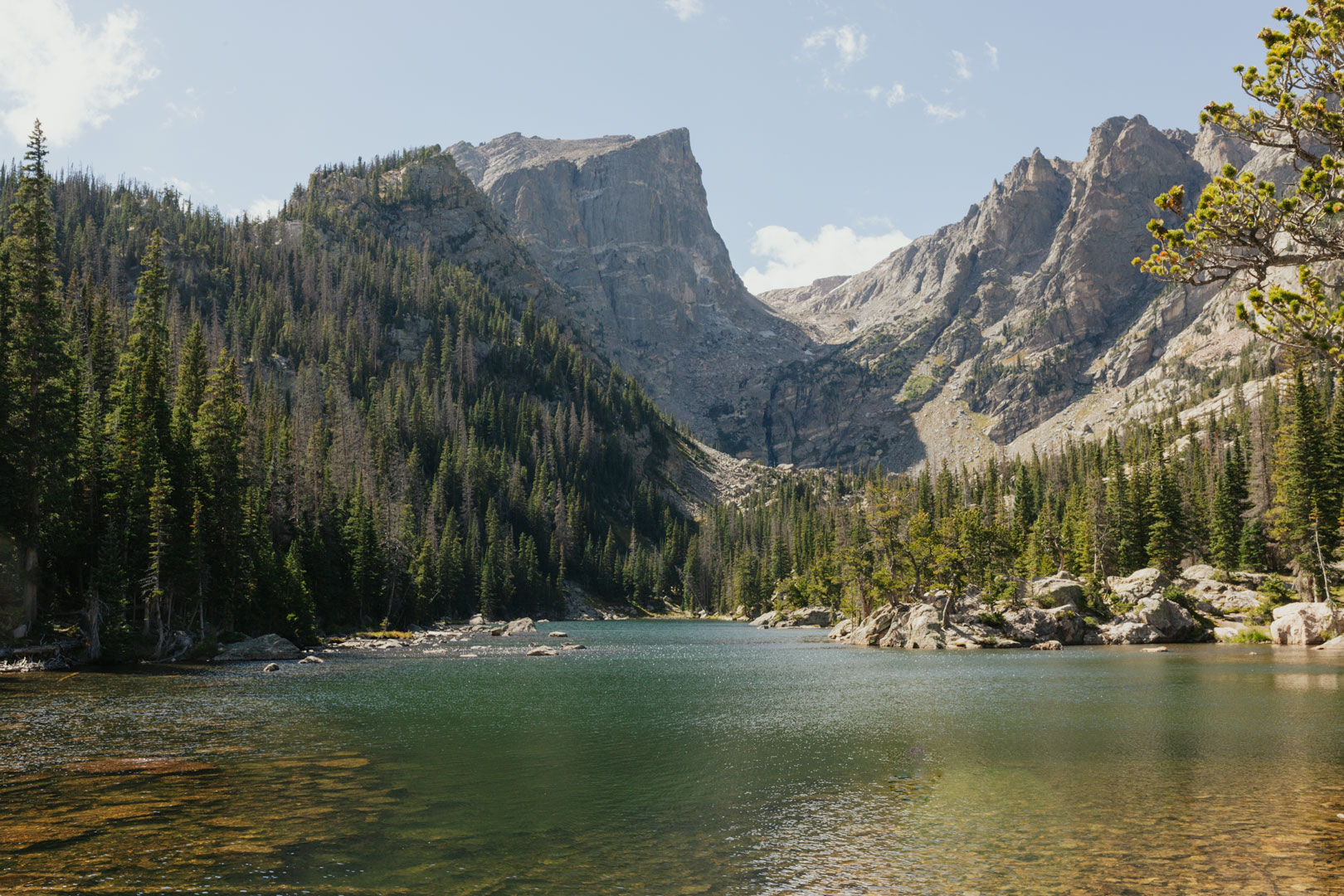
The 8 Best Hikes in the Bear Lake Road Corridor in Rocky Mountain National Park
The Bear Lake Road Corridor has some of the most scenic hikes in Rocky Mountain National Park. You’ll see towering and dramatic peaks, gorgeous alpine lakes, waterfalls, and wildlife. Trails range from accessible nature walks to challenging climbs. Anyone can have a great adventure here, regardless of their skills and abilities.
Most hikes on this list are considered moderately challenging. Before trying any trail, research it to make sure it’s one you’re comfortable doing.
Things to know about the Bear Lake Road Corridor
The Bear Lake Road Corridor requires a timed entry permit and a National Park pass.
All visitors need a timed entry permit between May 27th and October 10th. Timed entry permits sell out fast, especially for morning entry. Visit recreation.gov to reserve a timed entry permit. Make sure it includes the Bear Lake Road Corridor for any of the hikes on this list. You’ll still need to pay the national park entry fee or buy a pass.
Find up to date information on the timed entry reservation system National Parks Service website..
Dogs not allowed
Pets are not allowed on any trails, meadows, or tundra in Rocky Mountain National Park. This is for the safety of both your pet and the wildlife who call the park home. Dogs are only allowed in parking lots, picnic areas, and campgrounds and must be on a leash.
Weather
Weather changes fast in Rocky Mountain National Park. The varying elevation causes drastic changes in weather throughout the park. Always be weather aware and prepare for the worst. A good rule of thumb is to head back at noon when hiking above the tree-line to avoid dangerous storms. Patches of snow and ice can exist on any of the trails, even during summer. I recommend checking the AllTrails app beforehand to check trail conditions. Trekking poles and spikes would be helpful here.
Parking in the Bear Lake Road Corridor
Even with the timed entry system, parking at any of the trailheads can fill up fast. Does your hike begin at Bear Lake, Glacier Gorge, or Bierstadt Lake trailheads? Consider using the free shuttle system.
The Park and Ride lot is along Bear Lake Road before the trailheads mentioned above. A sign marks the Park and Ride lot and lets you know if the Bear Lake lot is full. Make sure to check when the last shuttle runs and be back early so you don’t miss it.
Park Map
Bring a park map with you while hiking, always. Assume you won’t have cell service in Rocky Mountain National park. You can get a free park map at any of the main entry stations during the hours park personnel are around. You can also download and print a map from the NPS website..
Camping in the Bear Lake Road Corridor
The best way to beat the crowds on these popular hikes is to start early. The best way to start early is to stay overnight as close to the trailhead as possible. The Bear Lake Corridor area has two “drive-up” campsites plus many primitive backpacking sites. Glacier Basin campground is across the street from the Park and Ride station. This allows easy access to the Bear Lake, Bierstadt, and Glacier Basin trailheads. Moraine Park Campground is closer to the entry station. It’s the perfect place to stay for hikes starting at the Fern Lake trailhead.
Camping anywhere in Rocky Mountain National Park requires a reservation and/or permit. Reservations fill up fast and early. For more information, visit the “Camping” page on the National Park Service website.
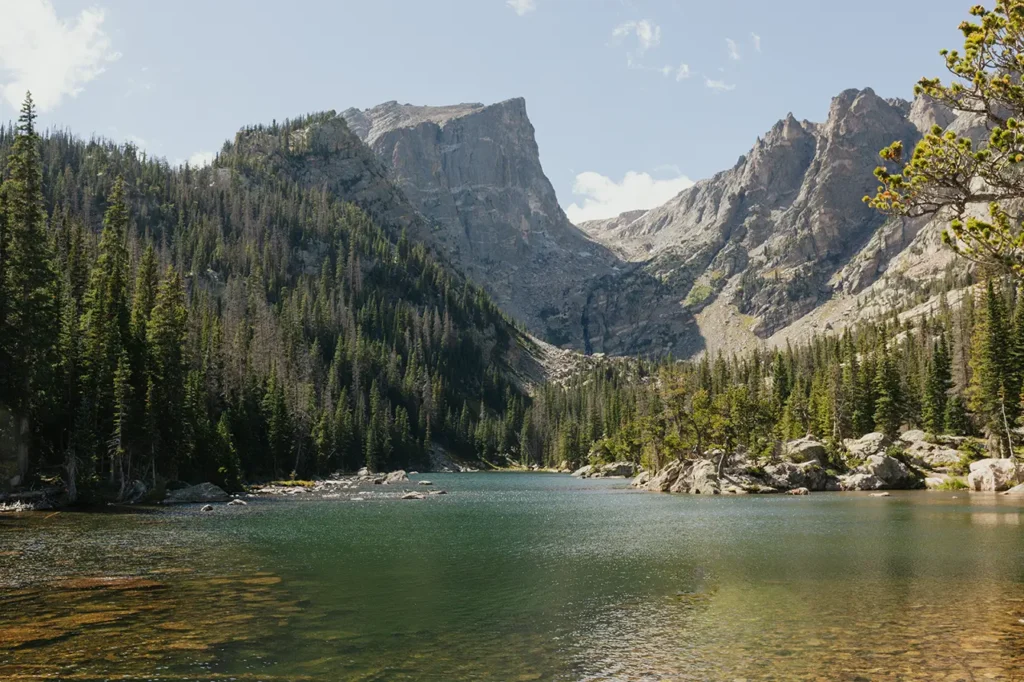
1. Emerald Lake Trail (includes Nymph and Dream Lakes)
Trail Overview
Distance: 3 miles (Add on Lake Haiyaha for an extra 2 miles)
Average time to complete: 1.5 hours (Add an extra hour to include Lake Haiyaha)
Difficulty: Easy to Moderately Challenging
Elevation Gain: 698
Highest elevation: 10,110 ft
Trailhead: Bear Lake
Emerald Lake is one of my FAVORITE hikes in Rocky Mountain National Park. The trail includes three alpine lakes, lush forests, stunning mountain views, and wildlife. You’ll see Nymph, Dream, and Emerald lakes on the trail and can add more. Many people consider Dream Lake to be one of the most picturesque places in the park. I can see why. Lush forests surround the crystal clear lake that’s backed by Hallett Peak. You’ll get an even more incredible view of Hallett Peak when you get to Emerald Lake, which sits at it’s base. The rocky bank beside the lake is perfect for relaxing and enjoying some snacks. If you’re lucky, you’ll see one of the outgoing marmots that live there.
Bonus Add Ons:
To get the most out of your hike, I recommend adding on Lake Haiyaha. The first two miles to Lake Haiyaha and Emerald Lake are the same. The trail then splits at the beginning of Dream Lake. Going right takes you along Dream Lake and to Emerald Lake. Going left takes you to Lake Haiyaha. Luckily the trail is well marked so you it’s easy to follow the signs when you get to the junction.
You can add on the Bear Lake nature loop to the beginning or end of your hike. It only adds .7 miles to your hike. It also serves as a nice warm up since the Emerald Lake trail begins at an incline.
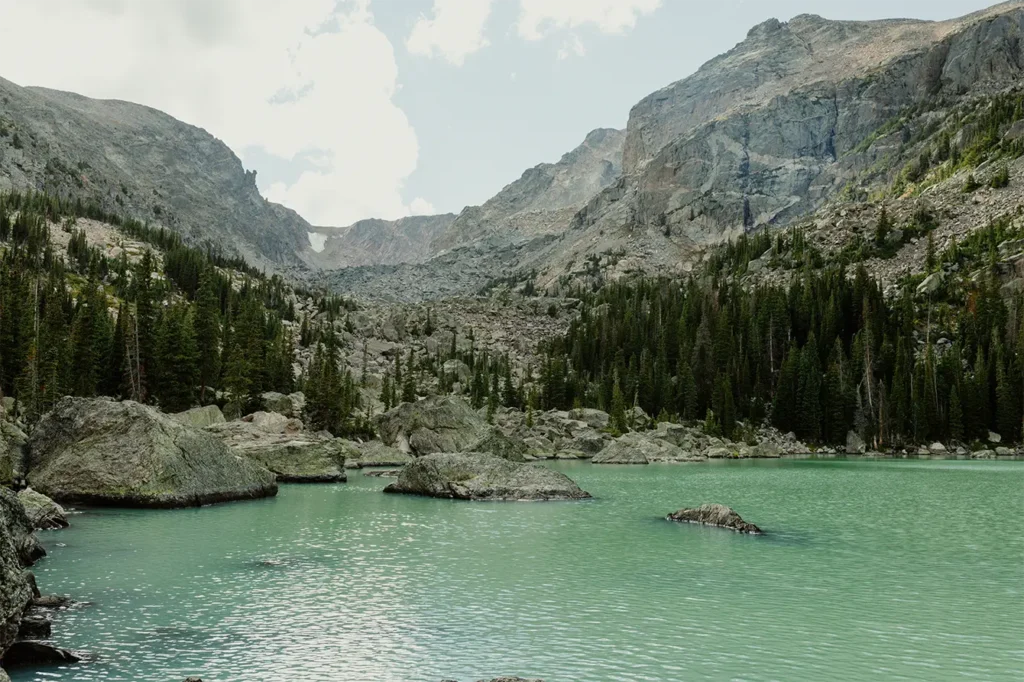
2. Lake Haiyaha
Trail Overview
Distance: 4 miles (Add on Emerald and Dream Lakes for an extra 1 mile)
Average time to complete: 2 hours (Add an extra hour and a half to include Dream and Emerald Lakes)
Difficulty: Moderately Challenging
Elevation Gain: 846
Highest elevation: 10,240 ft
Trailhead: Bear Lake
Lake Haiyaha is a gorgeous alpine lake at the base of Chaos Canyon. It’s a great spot for fly fishing or taking an alpine swim. After passing Dream Lake, you’ll walk up a steep incline. At the top, you’ll have amazing views of the Glacier Basin area. It’s interesting to see the places you hiked from an aerial view. Look for Bear Lake, Nymph Lake, and the trailhead. You will have to scramble through a boulder field for the last 50 yards of the hike. After all, “Haiyaha” is a Native American word for “rock”. The first half of Lake Haiyaha is the same as the Emerald Lake hike. For only an extra mile, you’ll get to walk along the long end of Dream Lake and see Emerald Lake. Totally worth it!
Why you should visit Lake Haiyaha asap!
As of October 2022, Lake Haiyaha turned a milky turquoise green. This is rare for lakes in Rocky Mountain National Park. A rock slide on the south side of Hallett Peak into Chaos Canyon n June 28th, 2022 caused the color change. Lake Haiyaha won’t stay this color, and sources say it’s already fading. There isn’t a set timeline on how long it will last. My best advice – visit Lake Haiyaha asap. Check an up-to-date source before visiting if you’re going specifically for the color. The comments section on AllTrails is a good place to start.
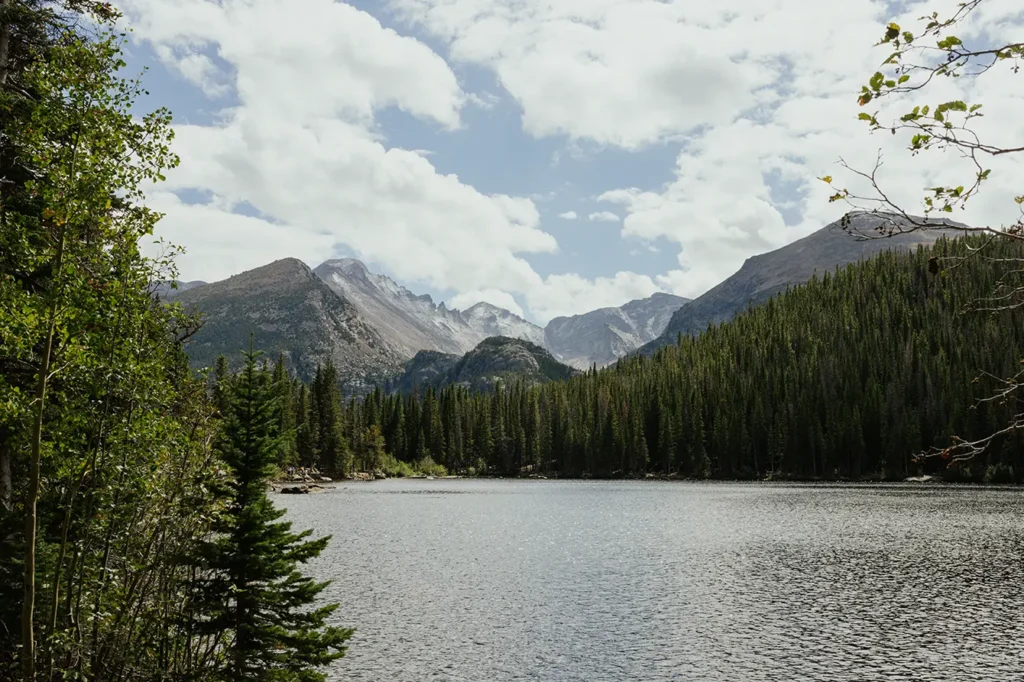
3. Bear Lake Nature Trail
Trail Overview
Distance: 0.7 miles
Average time to complete: 15 minutes
Difficulty: Easy
Elevation Gain: 232 ft
Highest elevation: 9,520 ft
Trailhead: Bear Lake
Bear Lake is an easy nature trail loop. It features distant views of Hallett Peak, Longs Peak, and the surrounding mountains. It’s location next to the Bear Lake parking lot make it easy to access. Bear Lake much more accessible than other trails on this list, except for Sprague Lake. It’s a great way for someone with physical disabilities to visit an alpine lake. It’s also an easy add on to any of the other hikes starting at the Bear Lake trailhead. While walking along the trail, you’ll notice wooden posts marked with a number. These go with an interpretive trail guide. You can buy a copy from the information center at the trailhead. Since Bear Lake is easy to access and is the start of some of the most popular hikes in the park, the trail gets VERY busy. Visit very early in the morning to try to beat the crowds.
4. Skypond via Glacier Gorge Trail
Trail Overview
Distance: 9.4 miles
Average time to complete: 4.5 hours
Difficulty: Hard, includes a challenging scramble up the side of a waterfall
Elevation Gain: 1758 ft
Highest elevation: 10,900
Trailhead: Glacier Gorge (or Bear Lake for a slightly longer hike)
Sky Pond is the most challenging hike on this list, but the views are so worth it! It’s best suited for experienced high-altitude hikers only. The trail includes a 100 ft climb up Timberline Falls before reaching the Lake of Glass. The climb can be dangerous – do not attempt with kids or if the falls are icy. Sky Pond will treat you to dramatic, rugged alpine lake and mountain views. The Sharkstooth, Cathedral Spires, Petit Grepon, and the Sabre tower above Sky Pond. Along the way, you’ll pass by Alberta Falls, Glacier Knobs, Loch Vale, Timberline Falls, and Lake of Glass. If you’re legs can handle it, add on Mills Lake and Glacier Falls on your way back down.
5. The Loch from Glacier Gorge Trail
Trail Overview
Distance: 5.4 miles
Average time to complete: 2 hours and 45 minutes
Difficulty: Moderate
Elevation Gain: 1056 ft
Highest elevation: 10,190 ft
Trailhead: Glacier Gorge (or Bear Lake for a slightly longer hike)
The Loch is a popular destination for photographers, fly fishers, and day hikers. It’s many viewpoints and natural beauty make it a perfect peaceful day hike. It’s on the same trail as Sky Pond, but it’s almost half as long and not as difficult. Views from the Loch include Taylor Peak, Taylor Glacier, and the Sharkstooth. You can start at Glacier Gorge trailhead or Bear Lake for a slightly longer hike. You’ll pass by Alberta Falls and Glacier Knobs. Consider adding on Mills Lake, Dream Lake, and/or Lake Haiyaha to extend your hike.
6. Alberta Falls Trail
Trail Overview
Distance: 1.6 miles
Average time to complete: 45 minutes
Difficulty: Easy
Elevation Gain: 232 ft
Highest elevation: 9,400 ft
Trailhead: Glacier Gorge
Alberta Falls is a quick and relatively easy hike featuring a 30 foot tall waterfall. It’s considered one of the best waterfalls in Rocky Mountain National Park and is a great spot for a scenic picnic. To get to the falls, you’ll walk through a mix of pine forests and aspen groves. Many people consider Alberta Falls an easy trail. You could still find it moderately challenging if you’re not used to the elevation. Consider continuing on to Mills Lake or The Loch if you feel up to a hike that’s longer and more challenging.
7. Mills Lake via Glacier Gorge Trail
Trail Overview
Distance: 5.5 miles
Average time to complete: 2.5 hours
Difficulty: Moderate
Elevation Gain: 856 ft
Highest elevation: 9,940 ft
Trailhead: Glacier Gorge
Mills Lake is on the Glacier Gorge trail below the east end of Thatchtop Mountain. It’s a popular trail for photographers, day hikers, and fly fishers. When the lake isn’t covered in snow, you can see trout and greenback cutthroats in the clear water. At the lake, you’ll be treated to beautiful views of Half Mountain and the east ridge of Glacier Gorge. On the way to Mills Lake, you’ll pass Alberta Falls and Glacier Knobs. Once you get to Mills Lake, you can continue to hike an extra half mile along the of the lake to Jewel Lake. Pair Mills Lake with the Loch, Lake Haiyaha, and/or Dream Lake for a longer day hike.
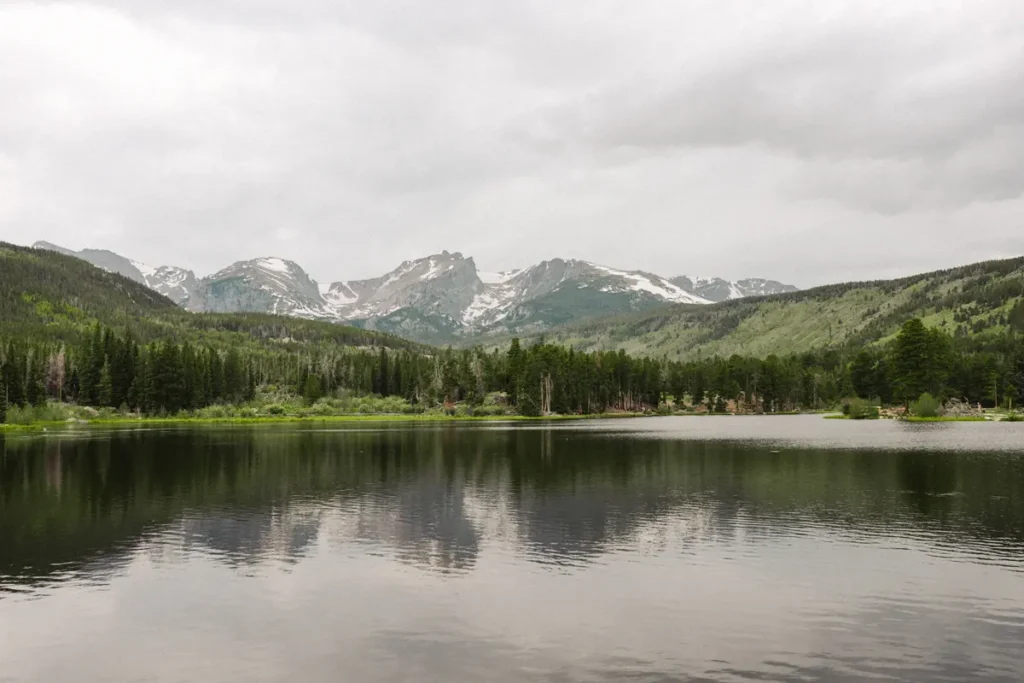
8. Sprague Lake Trail
Trail Overview
Distance: 0.8 miles
Average time to complete: 15 minutes
Difficulty: Easy
Elevation Gain: 36 ft
Highest elevation: 8,700 ft
Trailhead: Sprague Lake
Sprague Lake is the easiest and most accessible trail on this list. This nature trail is a loop with beautiful views of Sprague lake and the Continental Divide. You’ll be able to see Thatchtop Mountain, Taylor Peak, Otis Peak, Hallett Peak, and more. Sprague Lake is wheelchair accessible and usually not as busy as Bear Lake. It’s a great spot to stop for a picnic or fishing along the Bear Lake Corridor. Go early in the morning, around sunrise, for the best photos with limited people.
9. Fern and Odessa Lakes
Trail Overview
Distance: 9.3 miles
Average time to complete: 4 hours and 45 minutes
Difficulty: Moderate
Elevation Gain: 1,978 ft
Highest elevation: 10,033 ft
Trailhead: Fern Lake Trailhead
Fern and Odessa Lakes are less crowded than other trails in the area. You’ll get amazing mountain views, beautiful lakes, and a waterfall. You can reach them from either the Fern Lake Trailhead or the Bear Lake Trailhead. The Fern Lake Trailhead is less busy and closer to the entry station. You can access the Fern Lake Trailhead from the Moraine Park area. The trail follows along the Big Thompson river. It alternates between pine and aspen forests and views of the Big Thompson Valley. Fires from 2012 and 2020 damaged parts of the forest along the trail. This is most noticeable around The Pool area and after Fern Falls. Fern Lake has great views of several mountains, including Notchtop, Little Matterhorn, and the Gable. Continue on another mile to reach Odessa Lake. Odessa Lake will have the same great views as Fern Lake, plus views of Flattop Mountain.
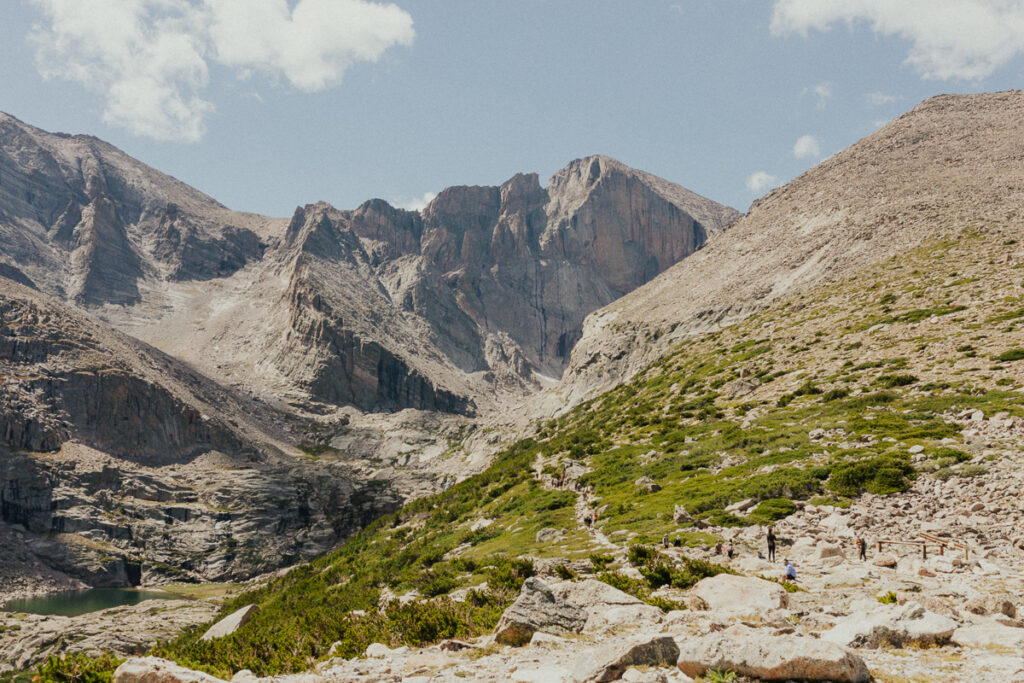
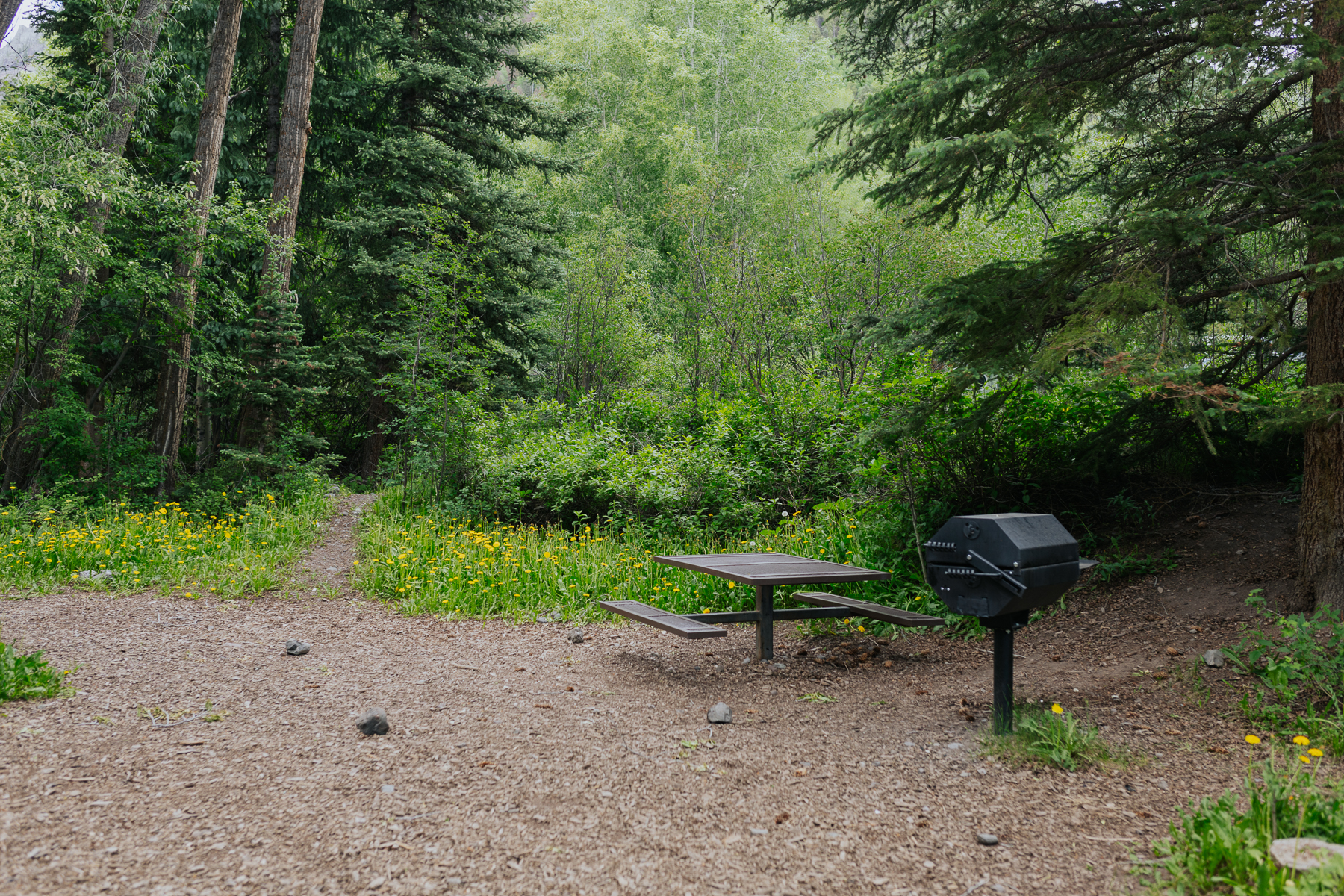
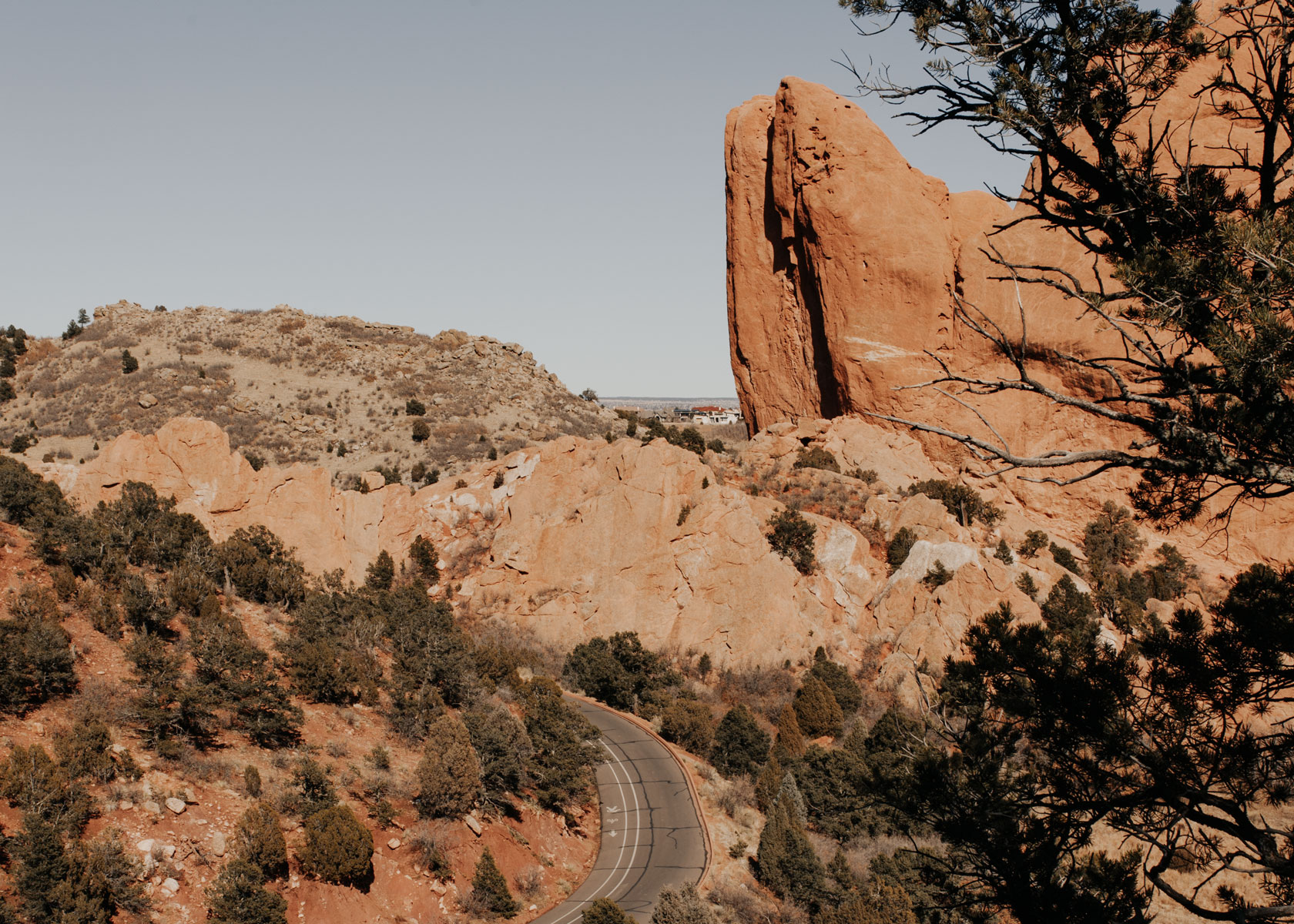


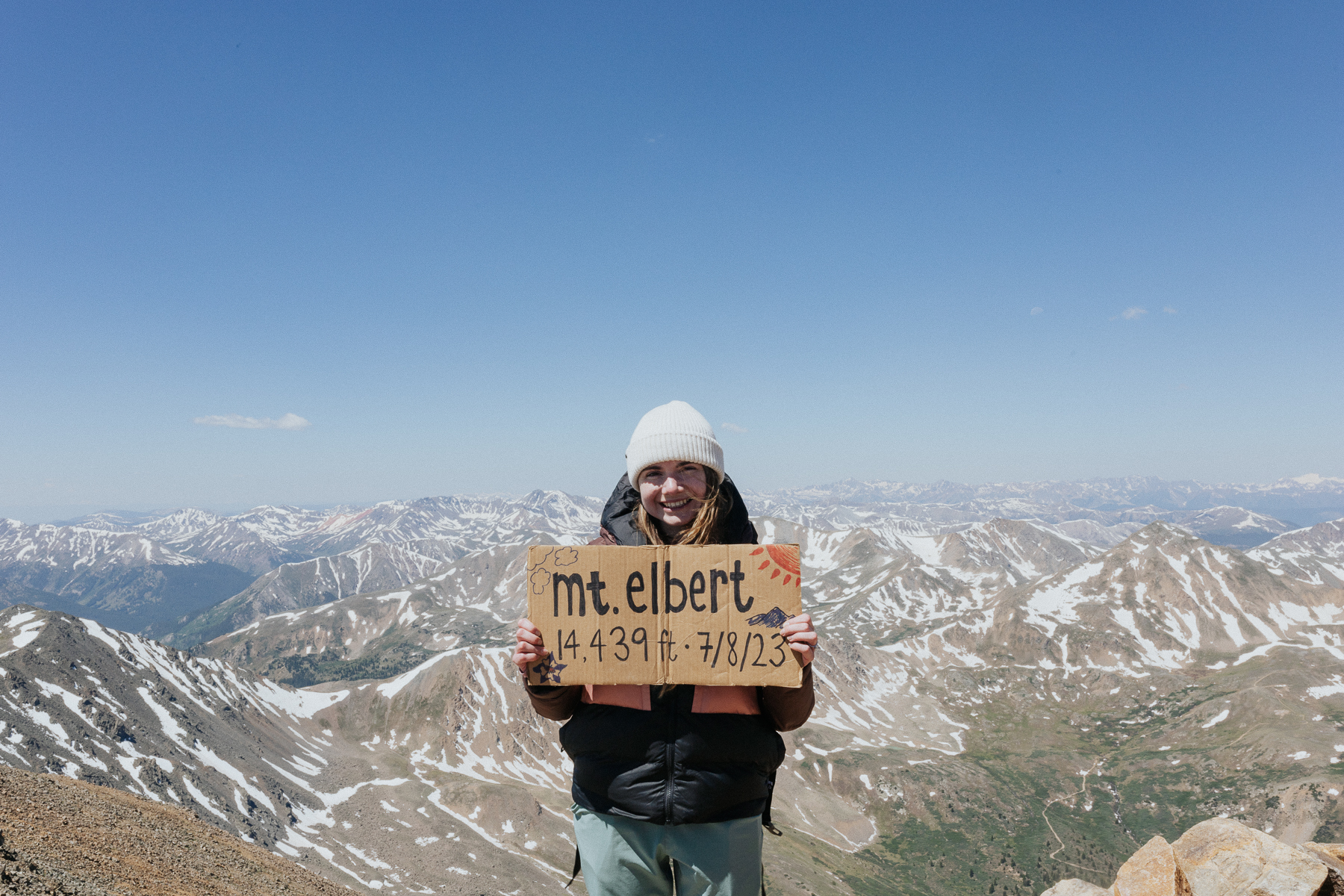
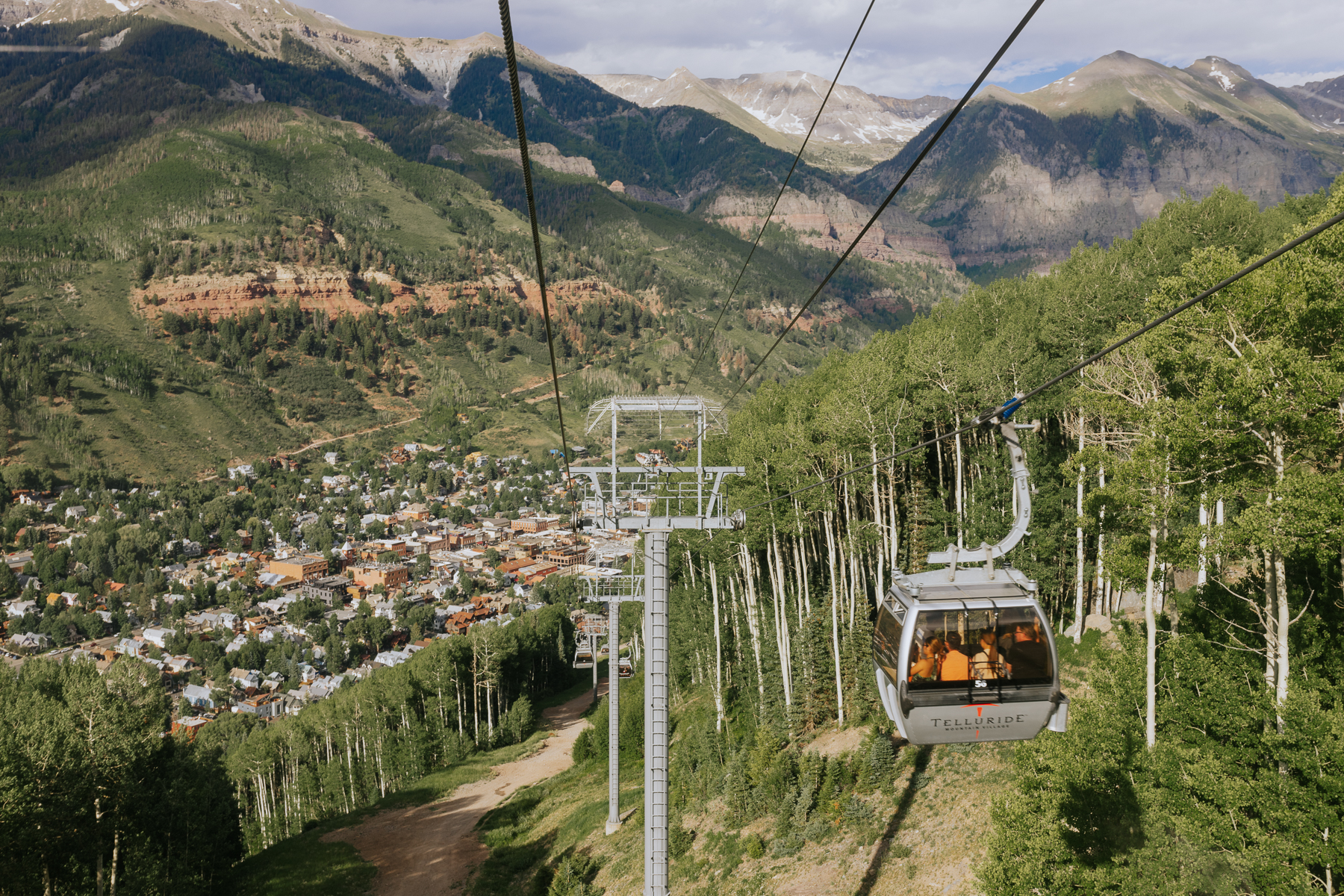
[close]
Comments